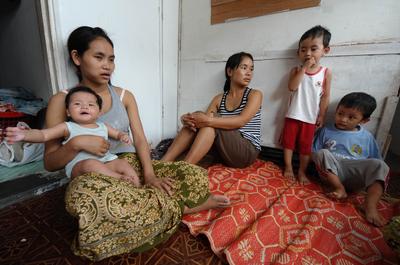The High Court built its decision on last year’s judgment in Plaintiff M61/2010E v Commonwealth where the Court said:
… read as a whole, the Migration Act contains an elaborated and interconnected set of statutory provisions directed to the purpose of responding to the international obligations which Australia has undertaken in the Refugees Convention and the Refugees Protocol.
The effect of the M61 decision was that the entire Act must be interpreted with Australia’s international obligations in mind. On this basis it’s hard to understand how the government got the Malaysia Solution so wrong.
As it stands now, the Migration Act allows people who arrive at, or are intercepted travelling to, Australia’s excised territories such as Christmas Island to be taken to a specified country. In order to take them to Malaysia the Minister was required to make a declaration about Malaysia under section 198A(3) of the Migration Act. The High Court case focused on how the Minister made his decision regarding the declaration.
Under section 198A a declaration states that the country in question:
provides access, for persons seeking asylum, to effective procedures for assessing their need for protection … provides protection for persons seeking asylum, pending determination of their refugee status … provides protection to persons who are given refugee status, pending their voluntary repatriation to their country of origin or resettlement in another country … and meets relevant human rights standards in providing that protection.
The High Court determined that these requirements must be facts under law. The Minister cannot just be satisfied a country will act in a certain manner; instead a country must be under an obligation, either under international law or within its own domestic legislation or from a legally-binding agreement, to provide access and protection to persons seeking asylum. The Court found that these facts were not and could not be established and therefore the declaration was invalid.
Malaysia is not a signatory to the Refugee Convention. It hosts huge numbers of asylum seekers, tolerates the UNHCR presence whilst they are processed and allows refugees to be sent on to settlement countries. Malaysia does grant refugee status and with it permanent or temporary residency, but it does not allow asylum seekers or refugees access to work, housing or education. In addition there have been real concerns about the treatment of asylum seekers and refugees by police and government officials.
Similarly Nauru does not process asylum claims or recognise refugee status under its domestic law and Papua New Guinea, which has signed the Refugee Convention with significant reservations (exceptions or modifications to their obligations), does not have specific domestic legislation that relates to the determination of refugee status.
It is therefore unlikely that any of the countries currently touted as part of a solution to Australia’s perceived problems would qualify under the Act as it now stands.
Changing the Act to remove or amend section 198A is problematic. The High Court’s decisions clearly highlight Australia’s obligations under international law and the way they are reflected within the entire Act. These are not restricted to the Refugee Convention and could include other treaty obligations such as the UN Convention of Rights of the Child.
A regional solution to the problem of refugee flows is an admirable goal. What Australia cannot do is mistake a deterrent framework for a regional protection framework. An effective framework would be built on the premise that people in need of protection must have durable solutions. It would incorporate the principles of protecting human rights. It would burden-share with other countries in the region and in doing so expand opportunities for protection.
Ironically, Malaysia entered an agreement which placed more responsibilities upon Australia to protect refugees than it did on itself. Whilst the agreement looked like an exchange of 800 asylum seekers for 4,000 recognised refugees, the agreement to accept the 4,000 refugees was independent of any exchange.
It is an obligation that Australia cannot escape regardless of the fact the agreement was not legally binding. The political ramifications for Australia within the region would be diabolical if the government chose to renege on their end of the bargain.
It could therefore be argued that the failed Malaysian Solution has inadvertently exposed what may be the only solid plank in a Regional Protection Framework. That is the commitment of Australia to take large numbers of UNHCR-processed refugees from a country within our region. Lifting Australia’s quota from Indonesia and Malaysia, and investing in the work of these countries may actually impact on the flow of boats and ensure Australia upholds its legal obligations under international and domestic law.
Marianne Dickie is Sub-Dean of the Migration Law Program at the ANU College of Law, The Australian National University.

